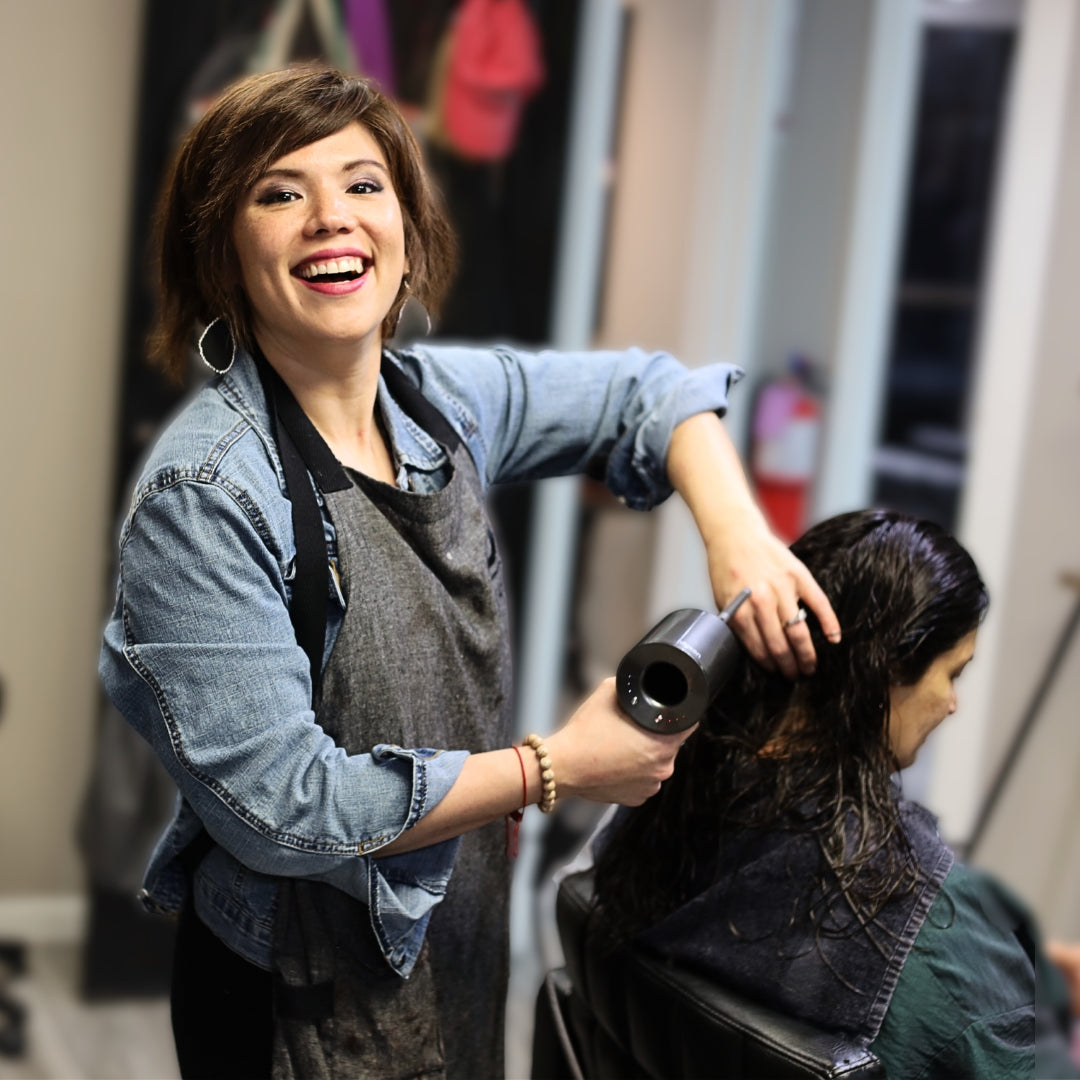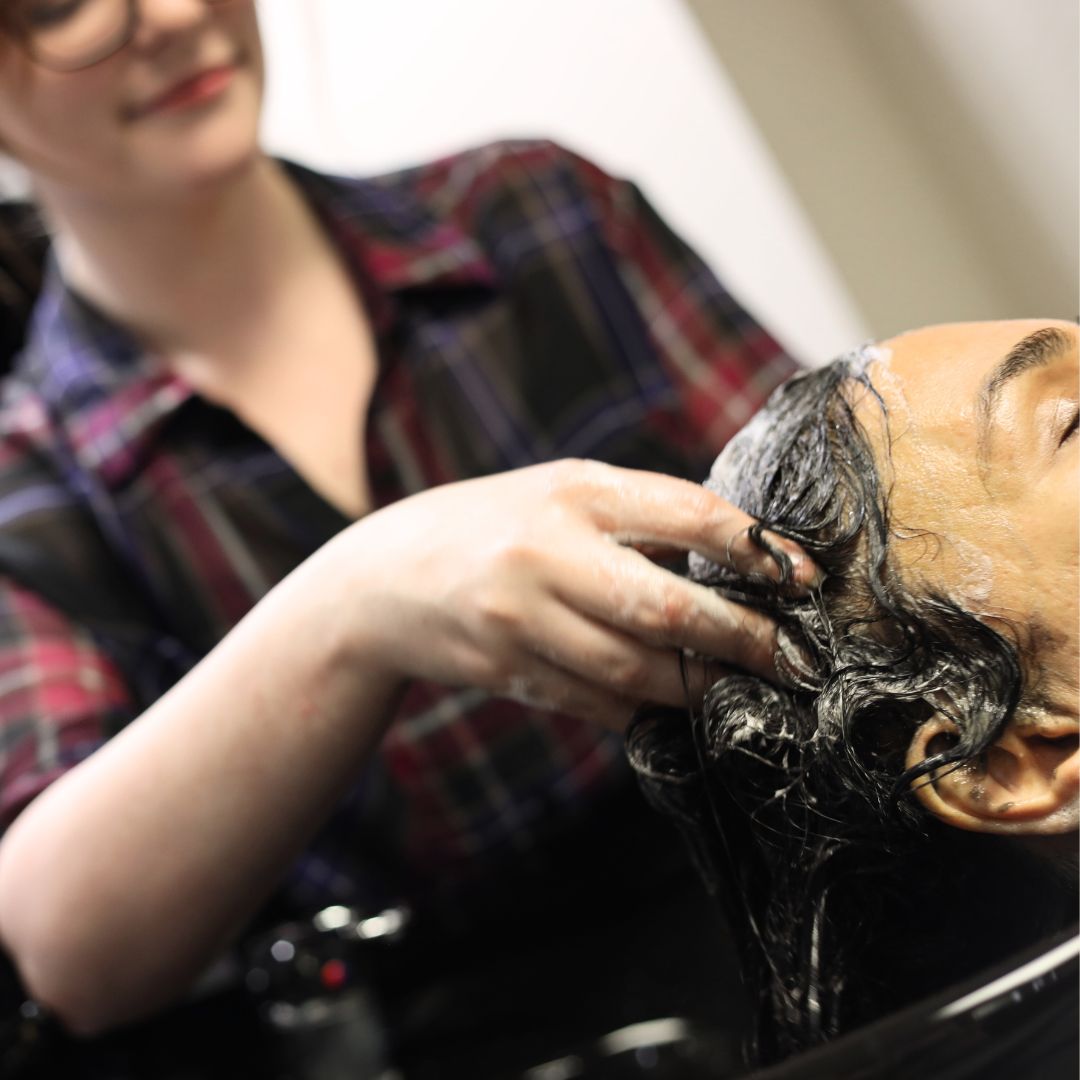The Right Brush for Every Hair Type
Why Brushes Matter
Most people think shampoo and styling products do all the work—but the tool you use every day, your brush, can make or break your hair health.
This guide will help you choose the right brush for your hair type, so you can protect, style, and shine like you just left Ippodaro.
Best Brush Types for Fine Hair
Boar Bristle & Cushioned Paddle Brushes
These are classics for a reason. They’re gentle, help distribute natural oils from scalp to ends, and add shine without tugging on fragile strands.

Round Brushes
If you love a round brush for styling, stick with Olivia Garden’s soft bristle versions. Their flexible bristles glide through hair without pulling or snapping strands. A tip while shopping:
Avoid Nylgard bristles. These are high-performance nylon designed for thick, coarse hair and high heat from blow dryers.
For fine or fragile hair, choose regular nylon bristles—they’ll give you control while staying gentle.
Fine hair is weakest when wet, so choosing the right detangling brush is non-negotiable.
-
Wet Brush Options: Look for brushes with Intelliflex or soft, bendable bristles that move with your hair instead of against it. The Wet Brush Mini Detangler is especially great—its compact size gives you more control and helps avoid forcing through knots.
-
Eco-Friendly Choices: Try the Go Green Detangler, made with plant-based materials. It’s sustainable while still keeping that essential flex.
-
Ultra-Gentle Alternatives: For those nervous about breakage, there are brushes designed specifically for fine, fragile, or color-treated hair. These use soft-flex teeth that minimize pulling, reduce breakage, and are perfect for use in the shower to evenly distribute shampoo or conditioner. They can also be used on dry hair for quick, gentle detangling.
Look for Features Like:

-
Rounded or ball tips to prevent scraping the scalp or cutting into the hair shaft
-
Spaced-out bristle patterns to reduce pressure and strain
-
Reinforced bristles that keep flexibility over time
Hair Healer Tips for Brushing Fine Hair
-
Start at the Ends: Work upward in small sections to minimize stress.
-
Add Slip: Use conditioner or a leave-in before brushing to reduce snagging.
-
Work in Sections: Smaller sections mean less tension and easier detangling.
-
Avoid Brushing Soaking Wet: Wait until hair is towel-dried to prevent snapping.
-
Clean Regularly: Remove hair and product buildup to keep bristles flexible.
-
Know When to Replace: If your bristles lose spring or flatten out, it’s time for a new brush to keep your strands safe.
Thick/coarse hair Best Brush Types
Detangling Must-Haves
For detangling, a wide-tooth brush or thick-hair detangler is ideal. These brushes feature clustered bristles made specifically for dense, coarse strands. The result?
-
45% less damage
-
55% less effort
-
100% happier hair
Styling Round Brushes: Ergo vs. Olivia Garden

Best for high heat styling thanks to durable nylon + tourmaline bristles.
Provides firm stiffness and tension, which makes smoothing thick, coarse hair easier.
Tourmaline + carbon infusion reduces static, boosts shine, and resists heat up to 500°F.
Pick Ergo ER65 for strong nylon bristles that deliver high-tension smoothing and wrapping.
Olivia Garden Round Brushes
-
Gentler choice for sensitive scalps and more fragile strands.
-
Works best with cooler blow-dryer settings—less risk of damage for both hair and brush.
-
Soft-tip, wavy bristles help tame frizz, smooth the cuticle, and glide comfortably over the scalp.
-
Pick Olivia Garden NT-44/Speed XL for soft-tip bristles, a smooth glide, and faster styling with its vented barrel.
Bristle Material Breakdown
-
Ergo: Tourmaline + carbon bristles = negative ions to reduce static, resist humidity, and maintain durability under extreme heat.
-
Olivia Garden: Nylgard bristles = engineered for high-heat resistance, anti-static benefits, and frizz control—perfect for blowouts on thick, frizz-prone hair.
Brush Picks for Thick/Coarse Hair
-
Paddle Detangler – Tackles large sections quickly.
-
Pro Detangler – Stronger bristles for better control.
-
Go green detangler-eco made hair brush -– Made from sustainable, plant-based materials.
-
Speed Dry – Vent design helps hair dry faster with less damage.
How to Brush Thick Hair
-
Prep – Apply leave-in conditioner or detangling spray. Clip hair into sections if long or dense.
-
Start at the Ends – Begin brushing the bottom 2–3 inches before moving upward.
-
Work in Sections – Detangle gradually, from ends toward roots.
-
Be Gentle – Let the bristles flex; don’t force knots. Add more spray if needed.
-
Finish – Once smooth, brush through the full length and add a light oil or serum for frizz control and shine.
Curly and textured hair

The wrong brush can cause frizz, breakage, or stretched-out curls. The key is using tools that protect your curl pattern and define texture.
Best Brush Types
Wide-tooth comb – Gentle detangling without pulling curls apart.
Go Green Detangler – Plant-based, flexible leaf design with adjustable tension to minimize breakage and effort.
-
Denman-style brush (like D4 Original Styler) – The ultimate curl-definer; spreads product evenly and creates the “clumping” effect for bouncy, uniform curls.
-
Ergo Round Brush – Nylon + tourmaline bristles for smoothing and wrapping when you want sleekness or blowout results.
Curl-Defining Tricks

For definition: Brush small sections downward, then release for natural curl clumps.
For tighter curls: Twist or coil ends as you brush.
For volume: Lift sections at the root before diffusing.
For smoothing: Brush product from root to tip for a sleek finish.
Curly hair style done by our hair hearler Jamie.
Pro Styling Tips
-
Always brush damp hair with leave-in or curl cream.
-
Apply products while wet, using the praying hands or scrunch method to lock in moisture.
-
Work in small sections to keep curls uniform and frizz-free.
-
Diffuser or air-dry only—skip rough towels and high heat.
-
Don’t touch curls while drying to avoid frizz.
Hair Healer Tip
Adjust your Denman brush to your curl type:
-
Fewer rows = softer tension, great for waves or fine hair.
-
More rows = stronger tension, perfect for coarse, springy curls.
-
The right brush doesn’t just detangle—it defines, protects, and elevates your curls.
Brush Hygiene – The Overlooked Secret
Why Cleaning Matters
-
Removes buildup – Oils, product residue, and dust cling to bristles.
-
Prevents bacteria – A dirty brush can harbor microbes that affect scalp health.
-
Protects performance – Clean bristles glide better and last longer.
-
Supports hair health – Keeps hair fresher between washes.
Simple Cleaning Routine
-
Remove hair – Pull out shed strands with your fingers or a comb.
-
Wash – Soak the bristles in warm water with a drop of gentle shampoo.
-
Rinse well – Shake off excess water.
-
Air dry – Lay bristle-side down on a towel until completely dry.
When to Replace
Even with good care, brushes don’t last forever. For best results, replace your brush every 6–12 months—especially if bristles are bent, melted, or no longer smooth.
Hair Healer Tip
A clean brush = cleaner, shinier, healthier hair. Treat your brush like skincare—you wouldn’t apply moisturizer with a dirty sponge, so don’t style your hair with a dirty brush.
Conclusion
Choosing the right brush really comes down to your hair type and your styling goals. Brands like Ergo and Olivia Garden engineer their bristles differently — Ergo leans on tourmaline-carbon infused nylon for high heat resistance and strong tension, while Olivia Garden offers more variety with Nylgard™ heat-resistant nylon, soft-tip wavy bristles, and boar/nylon blends for shine and smoothing.
For fine hair, the best choice is a gentle detangler with ultra-flex bristles (like Wet Brush Thin Hair Detangler or Original Detangler) to minimize breakage. For thick or coarse hair, sturdier options (Paddle, Pro, or Speed Dry) help you manage density, work through knots faster, and pair well with sectioning and detangling spray.
The golden rule no matter your hair type? Start at the ends, work in sections, and let the brush glide — don’t force it. With the right bristles and the right technique, you’ll reduce damage, smooth the cuticle, and keep your hair healthier and shinier in the long run.
Still unsure? That’s what our Hair Healers are here for — we’ll guide you to the perfect brush for your hair type, your routine, and your goals. Contact us



